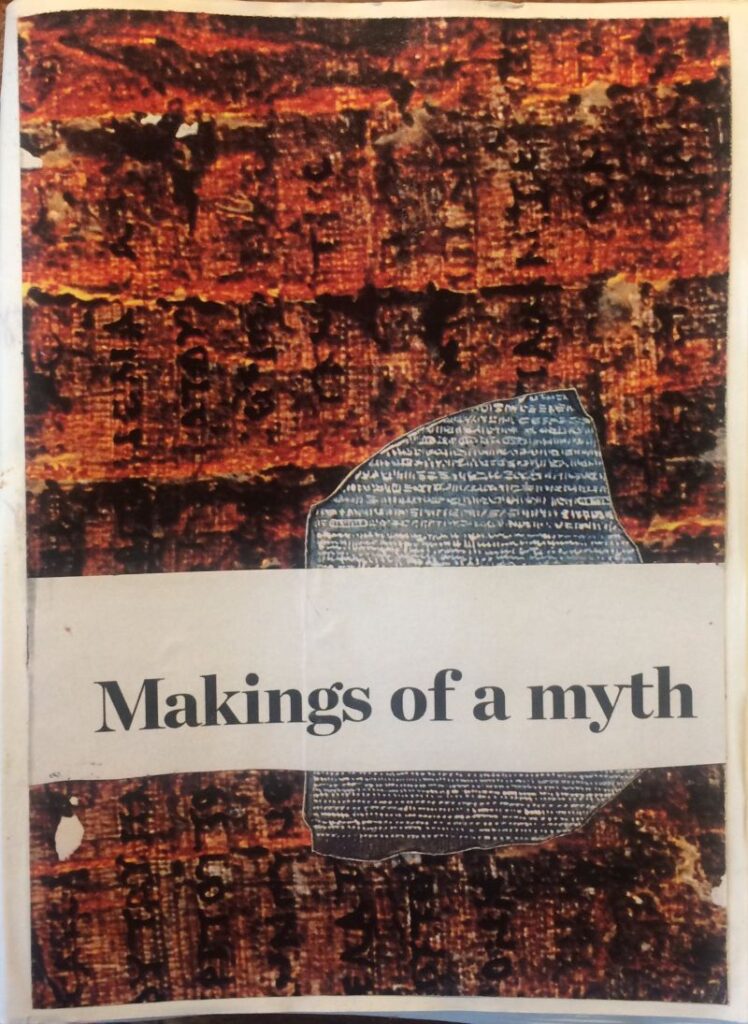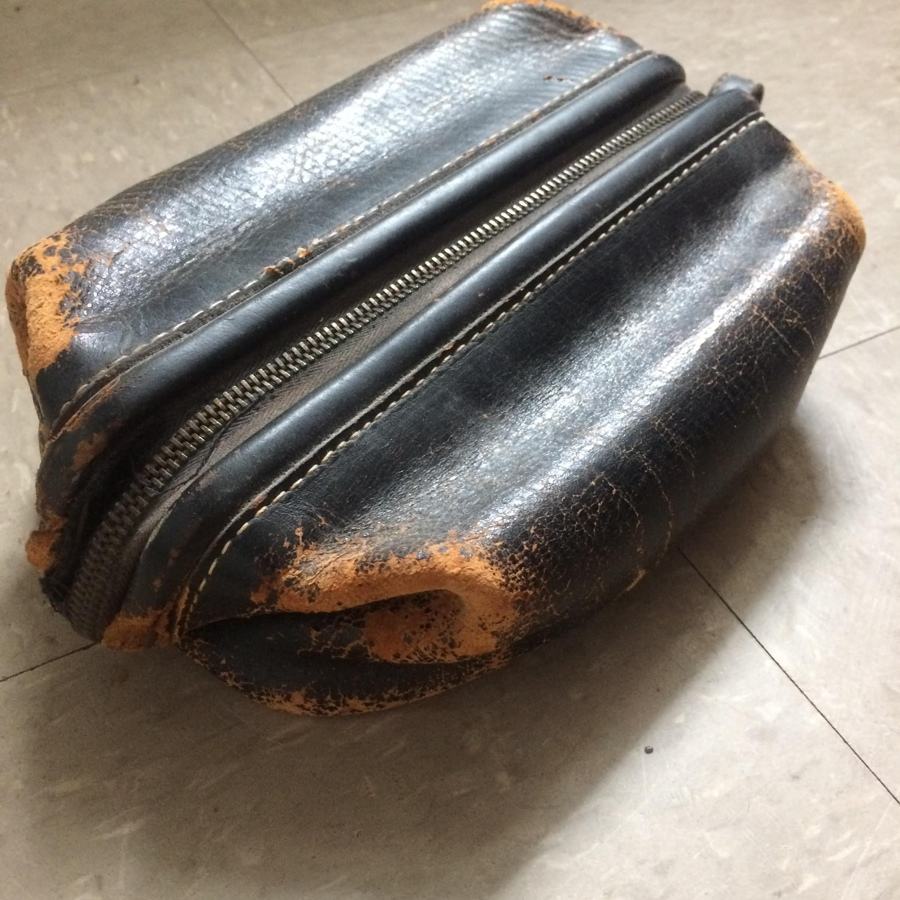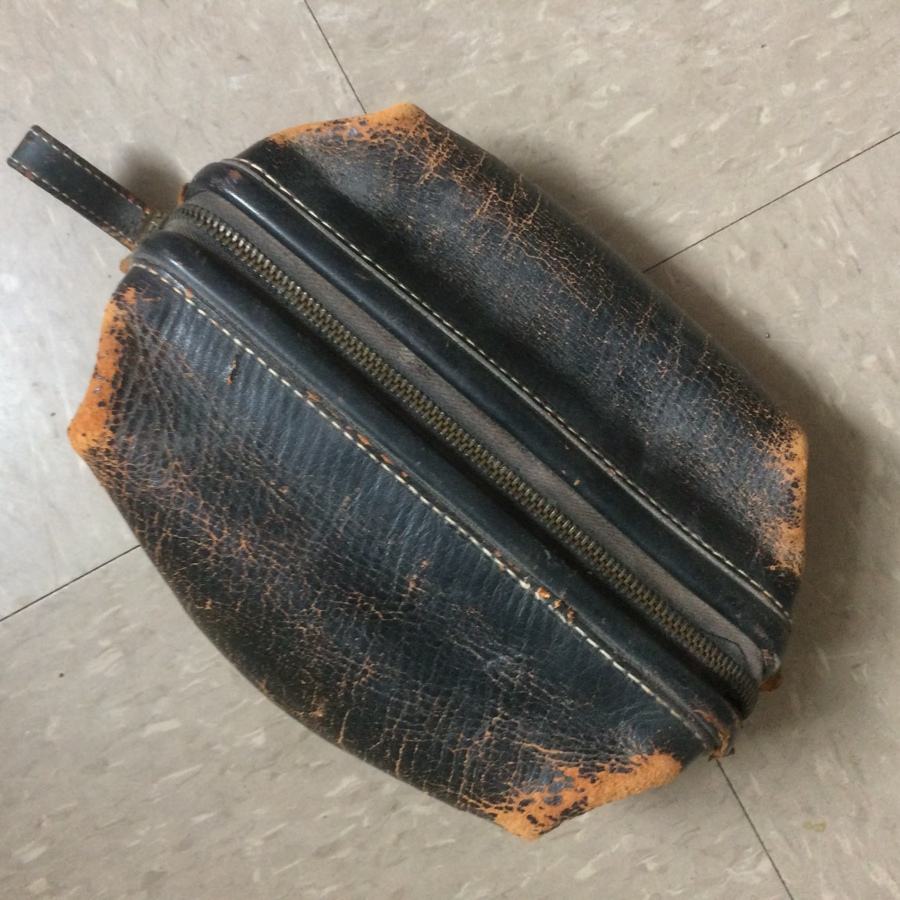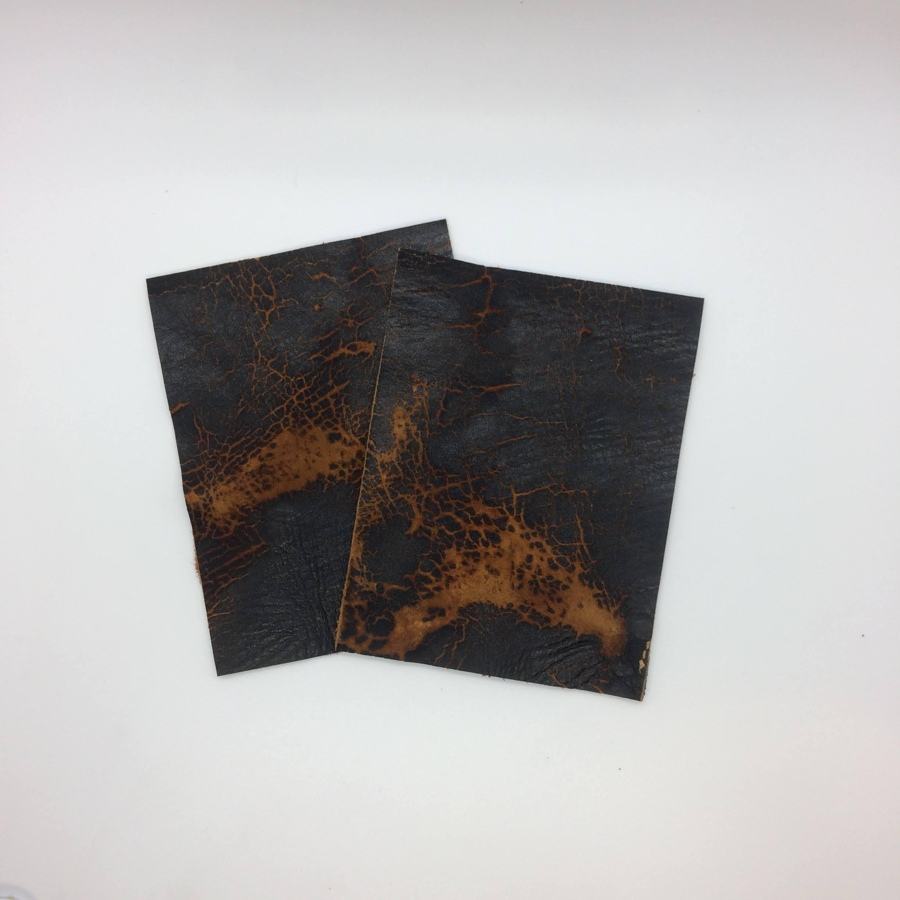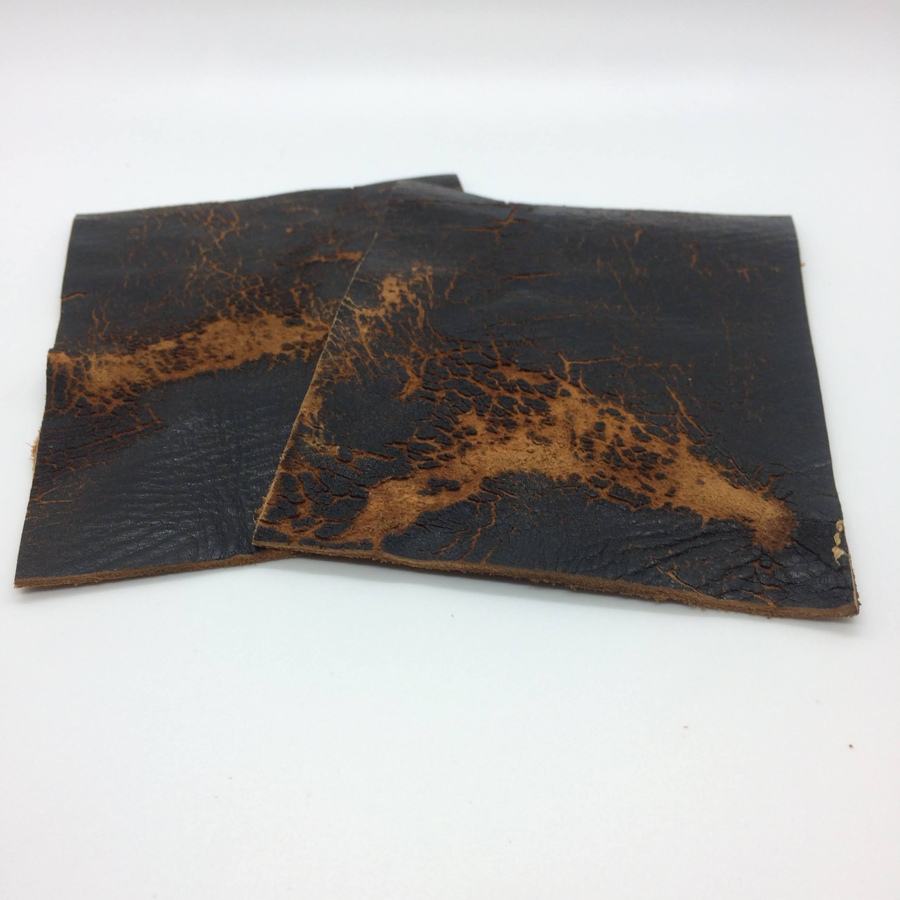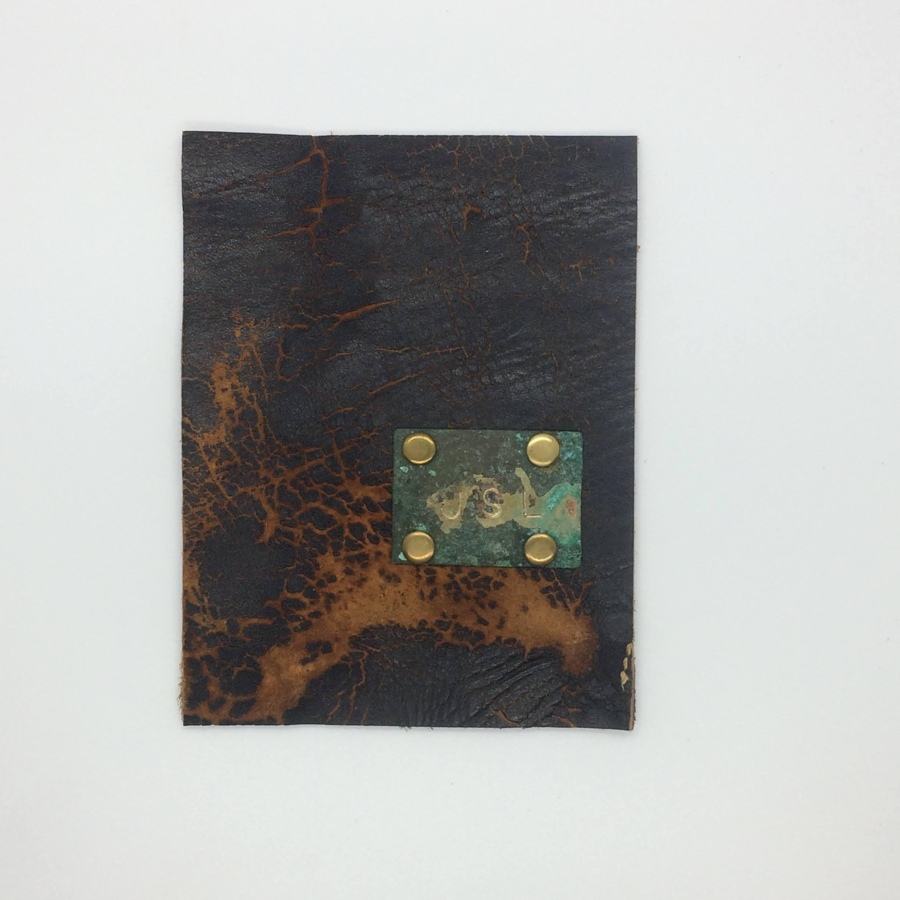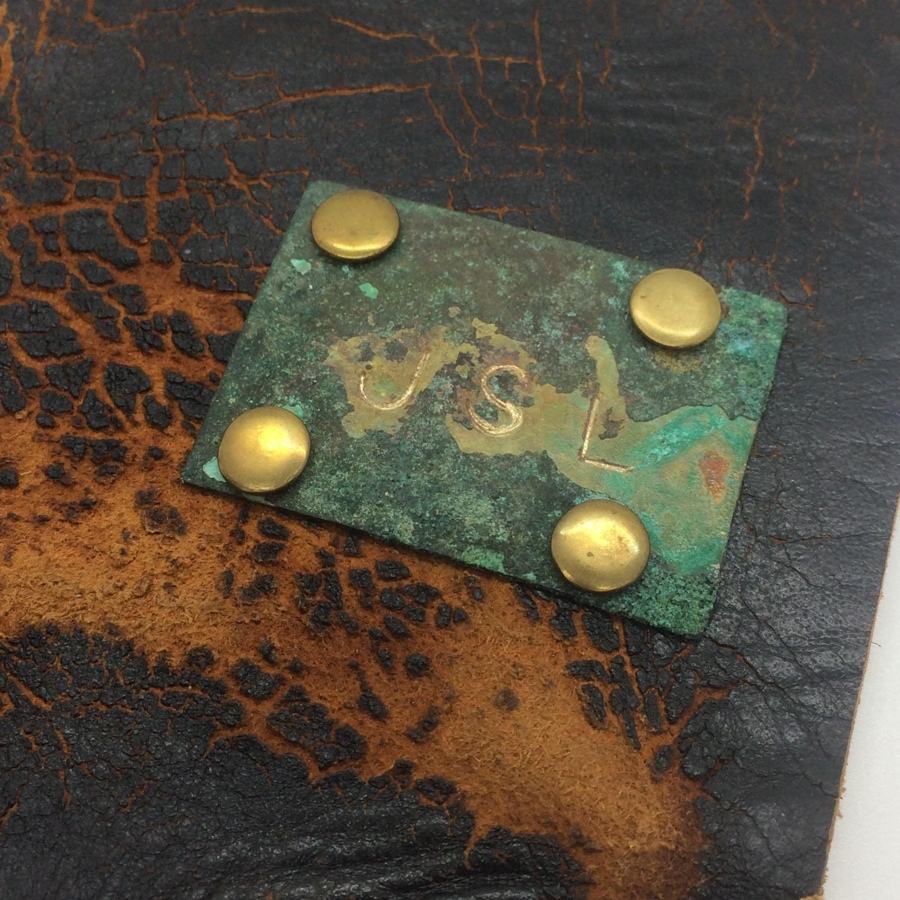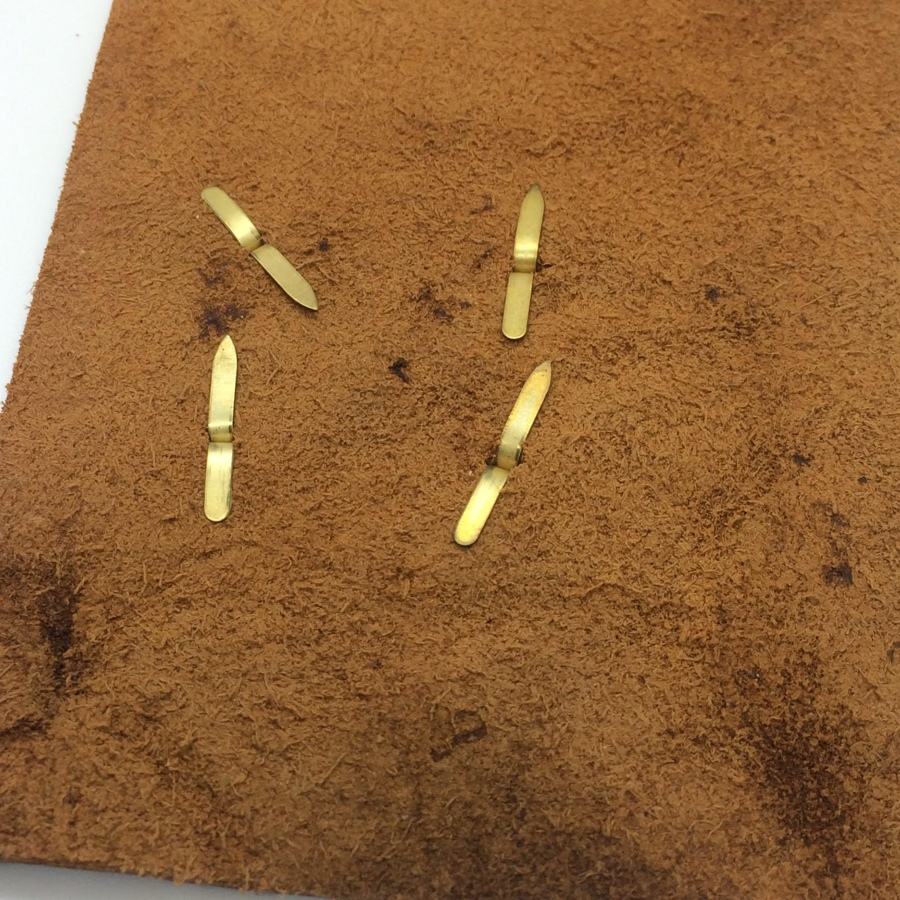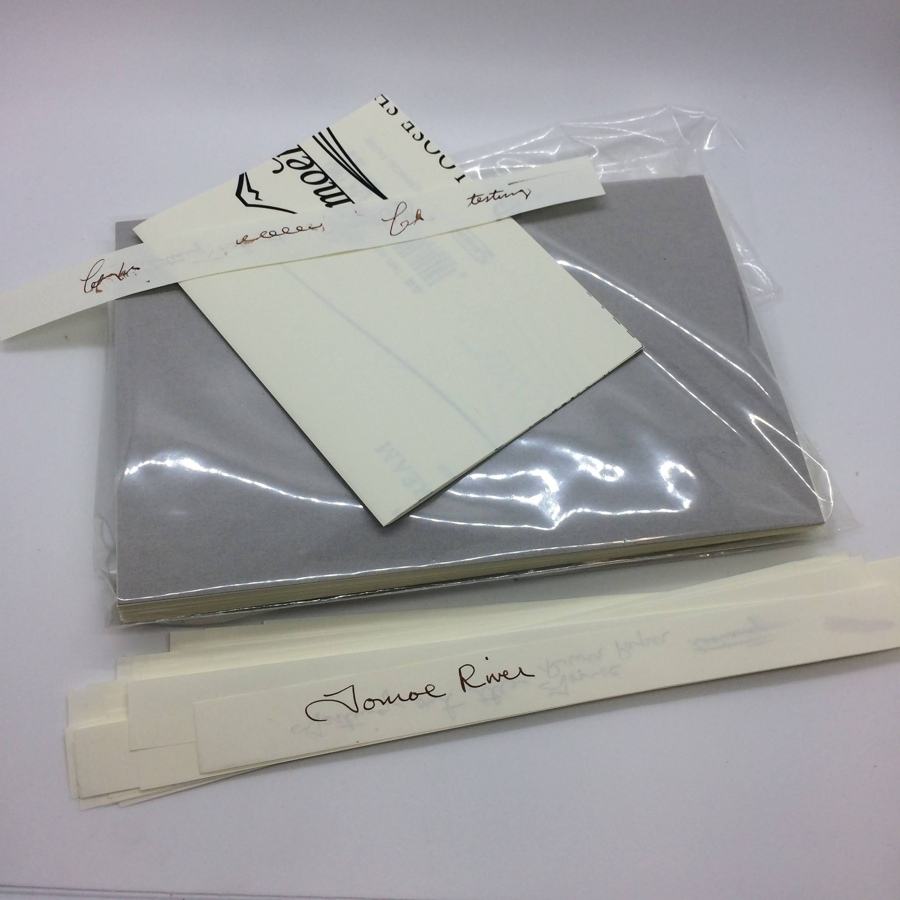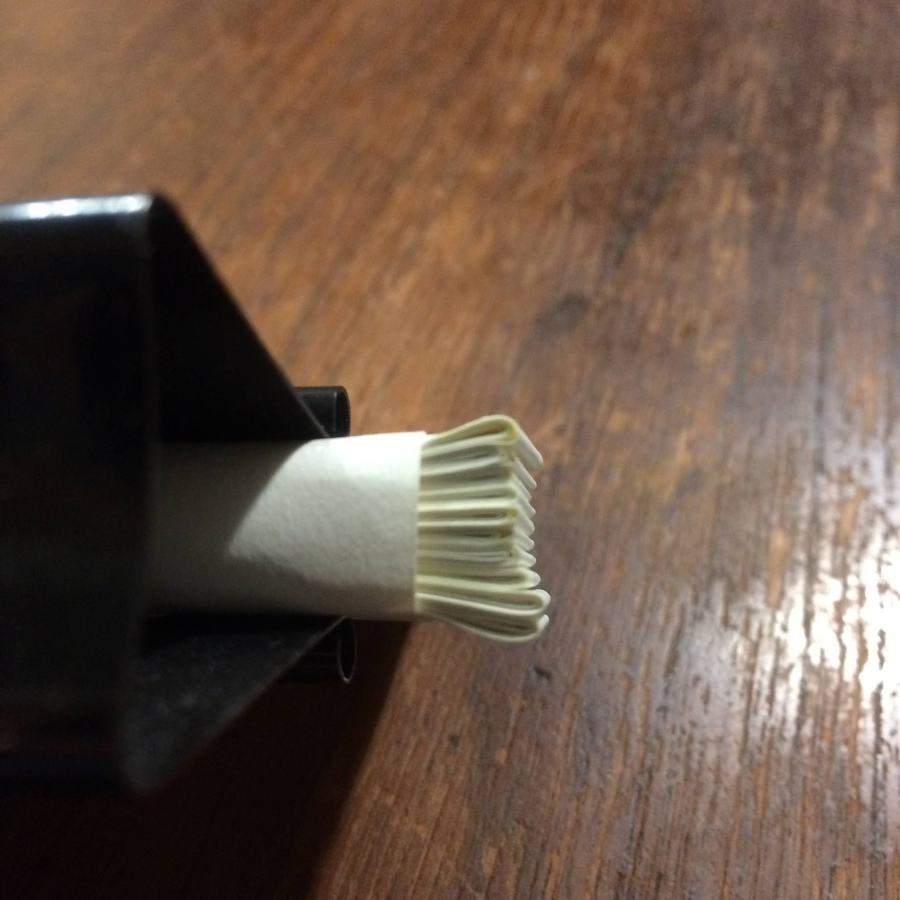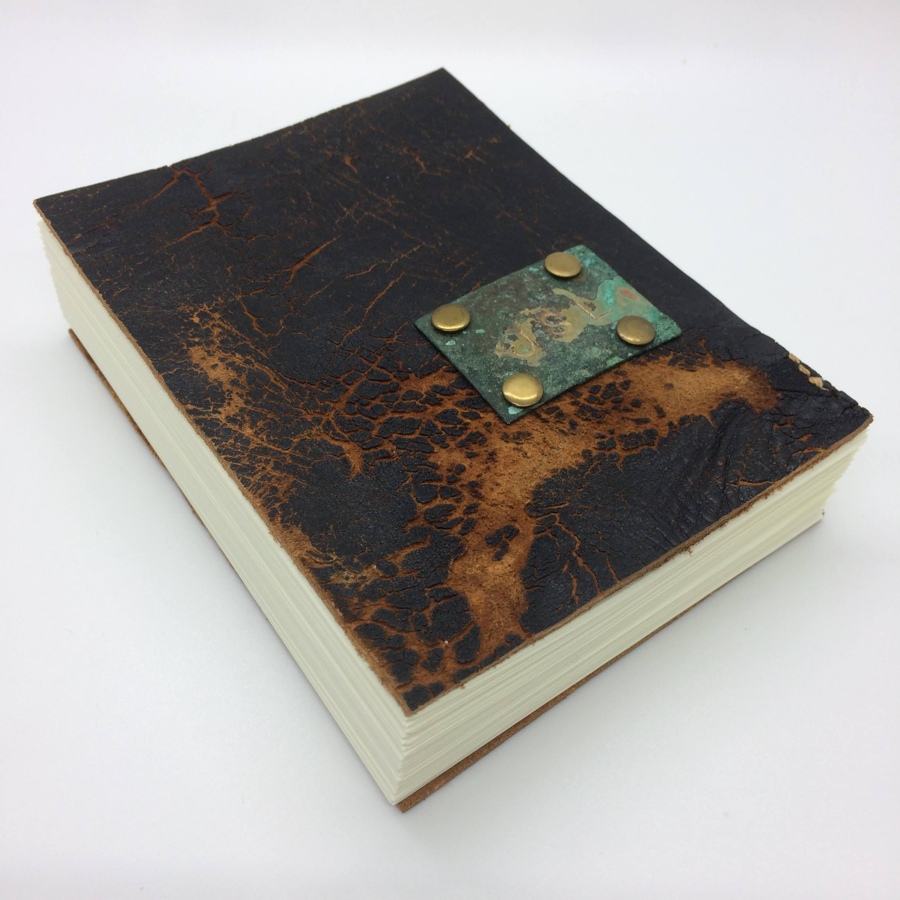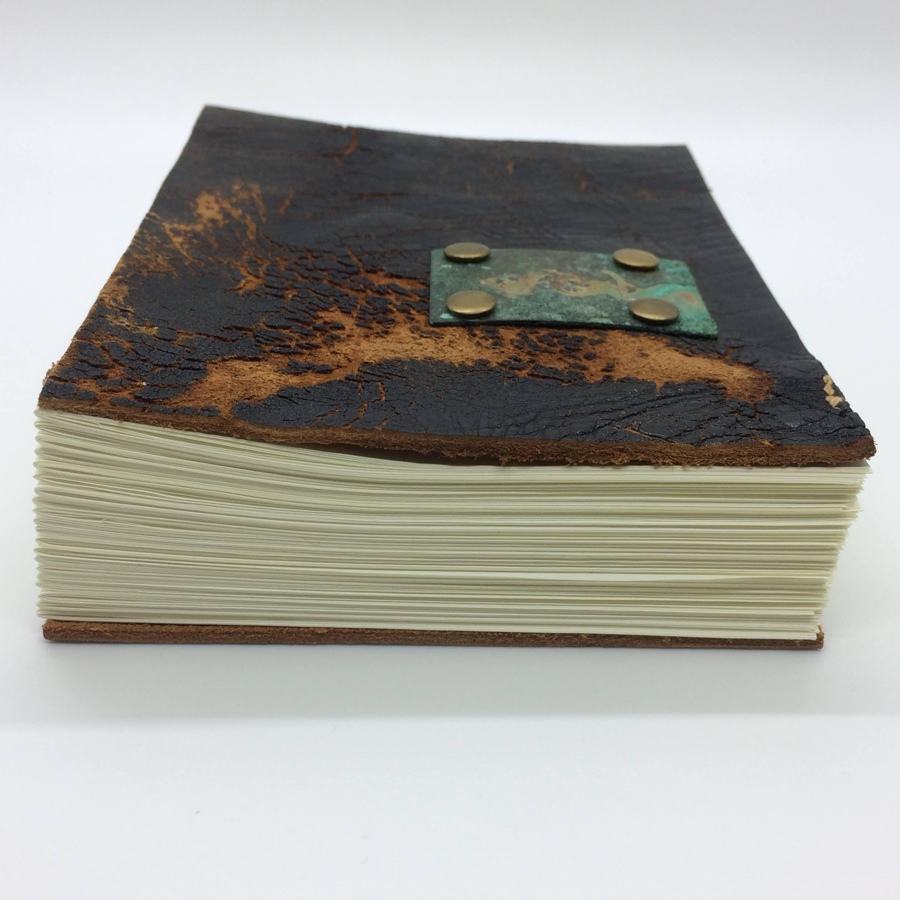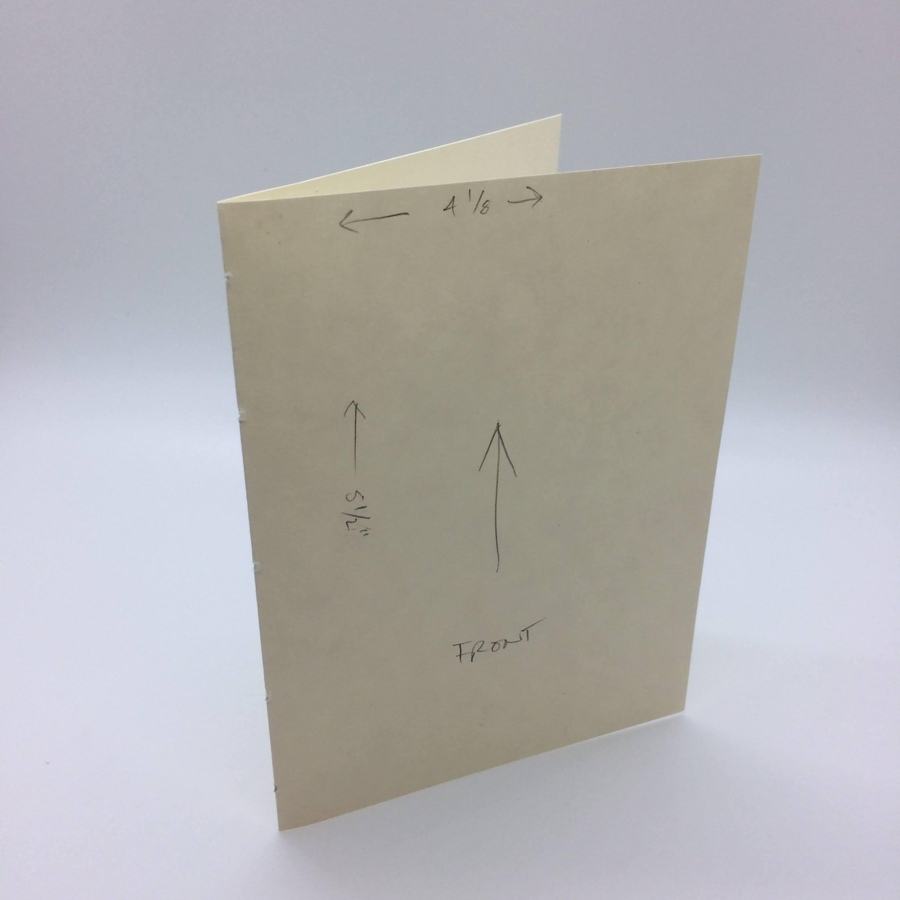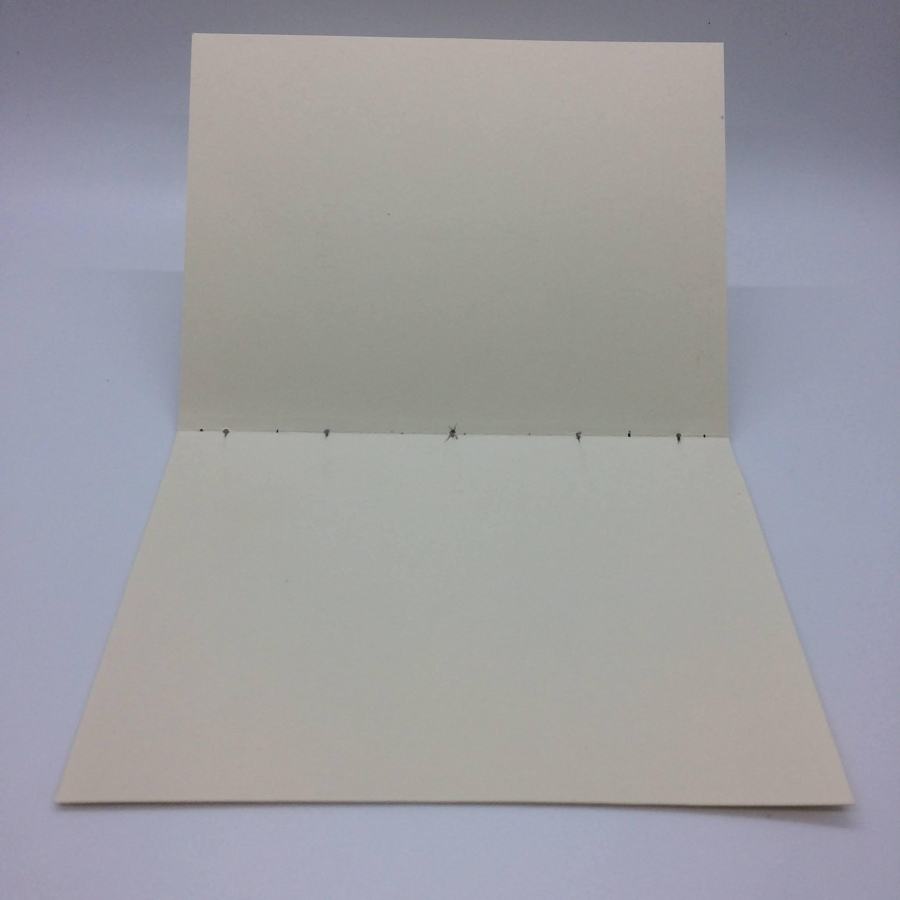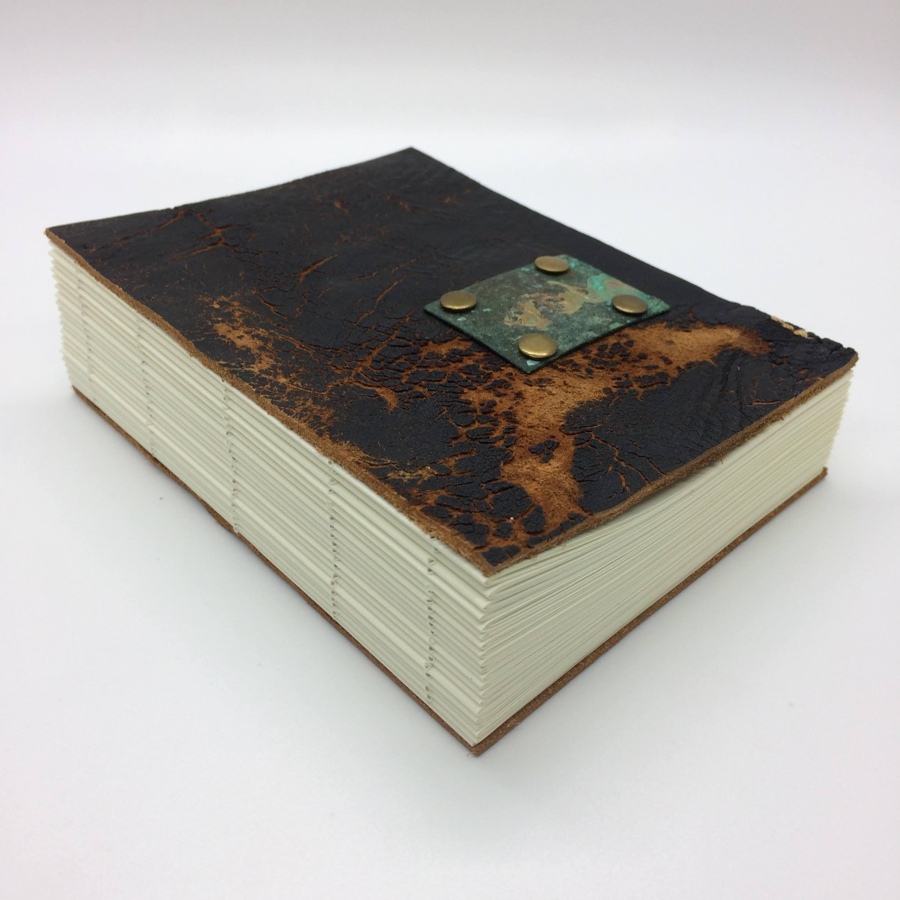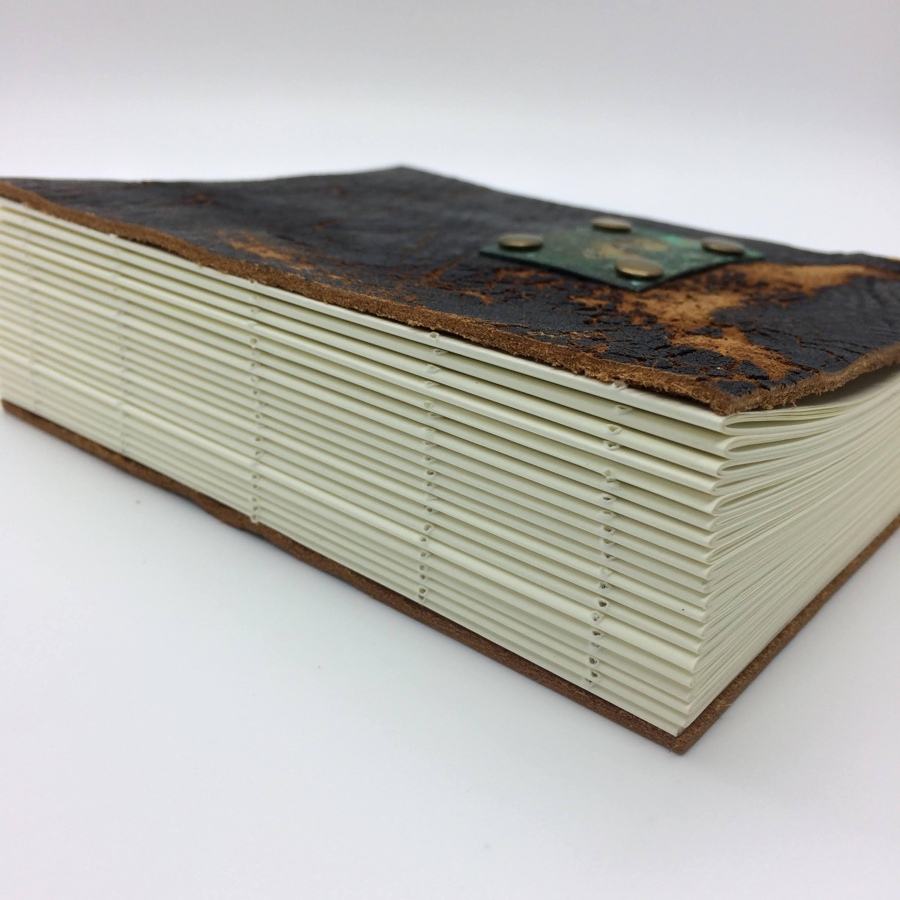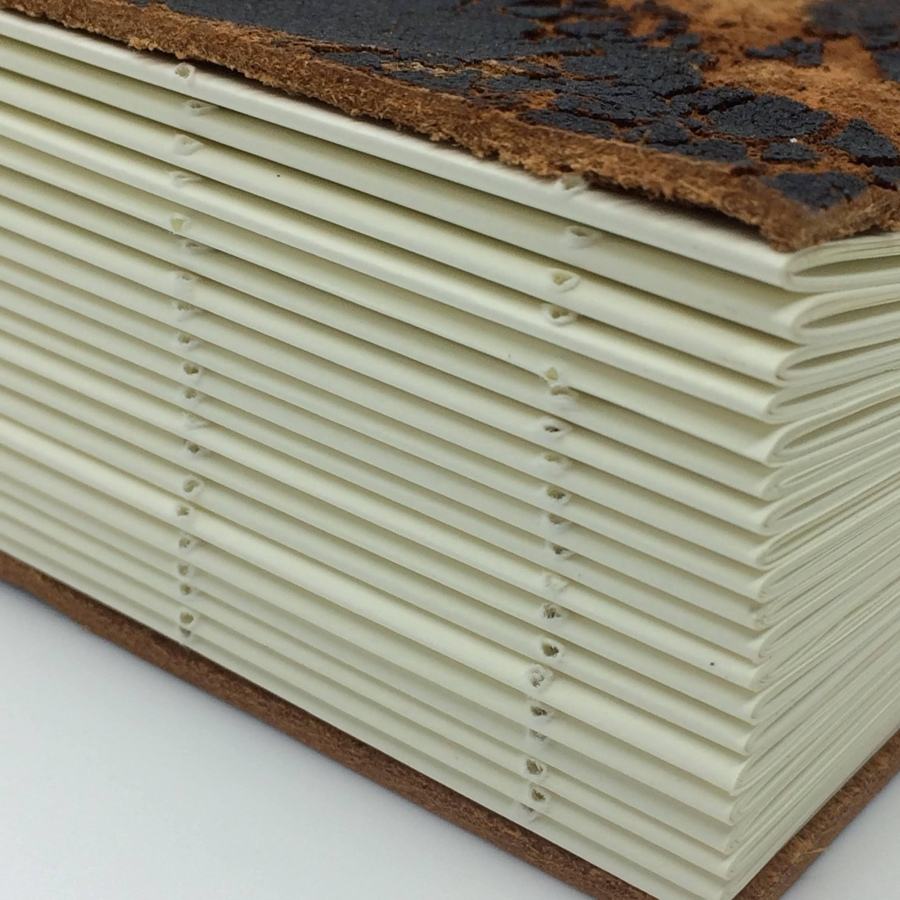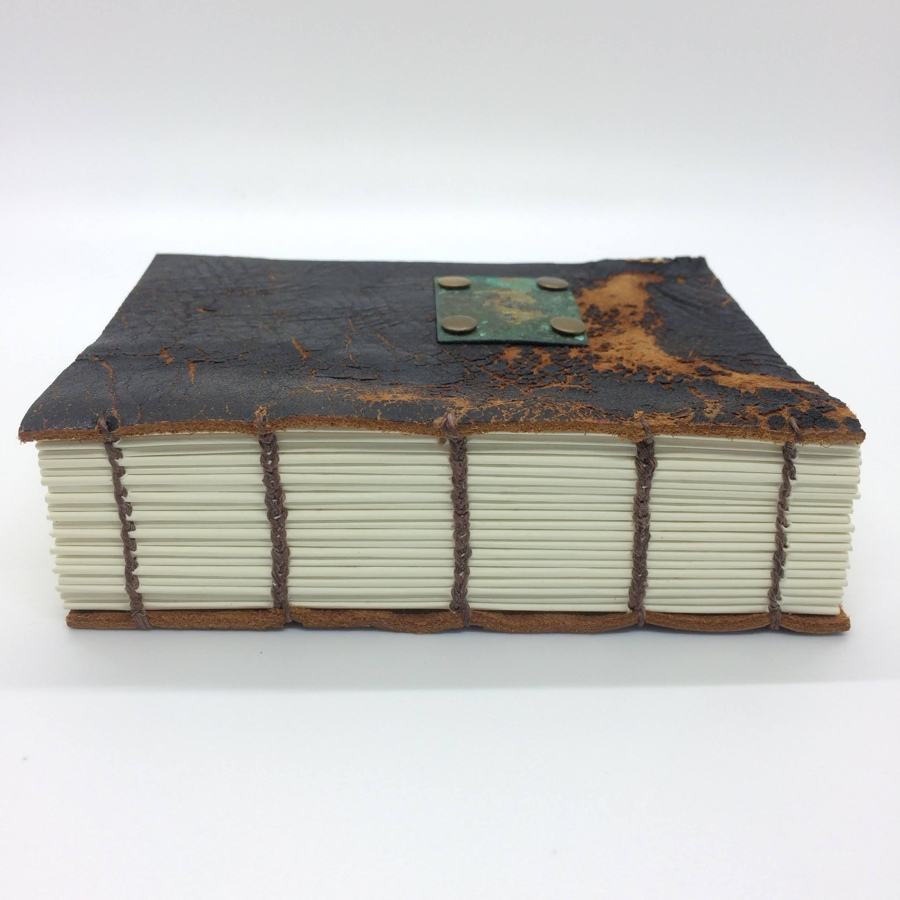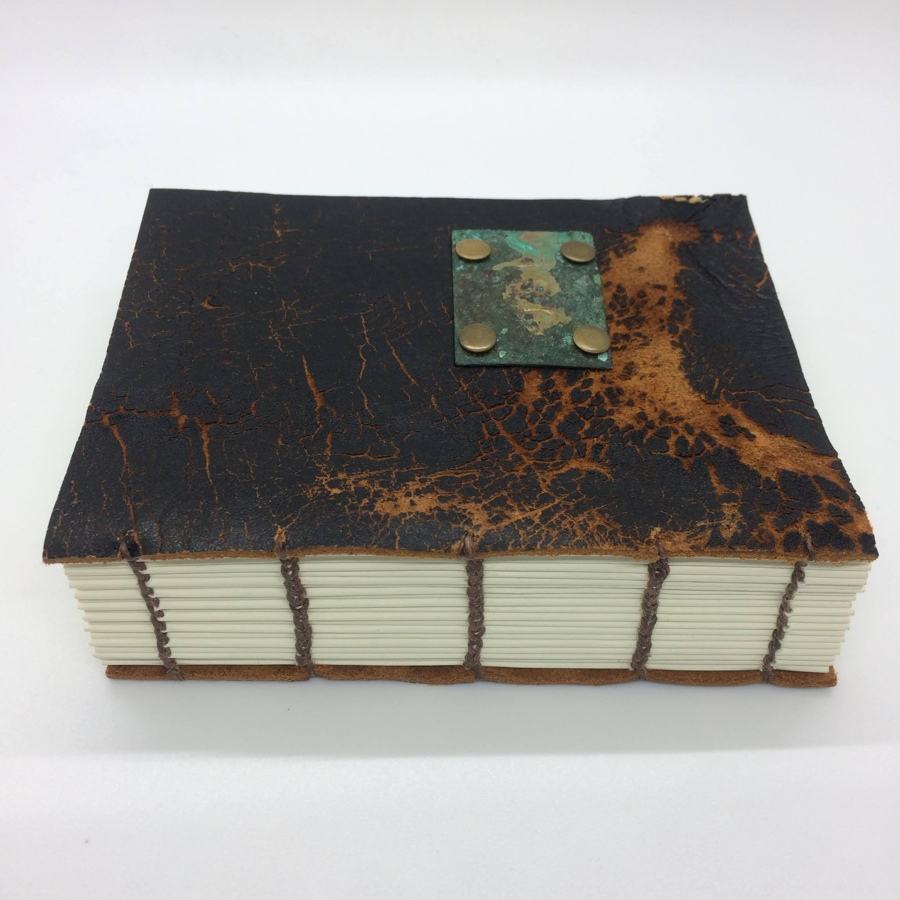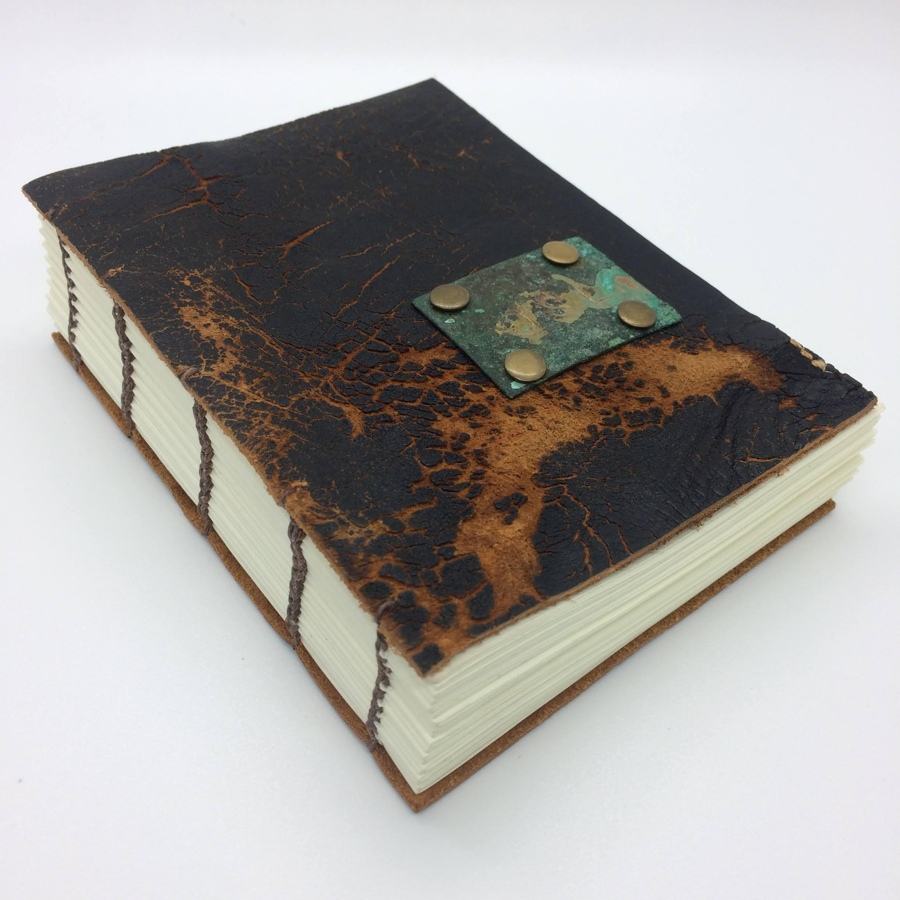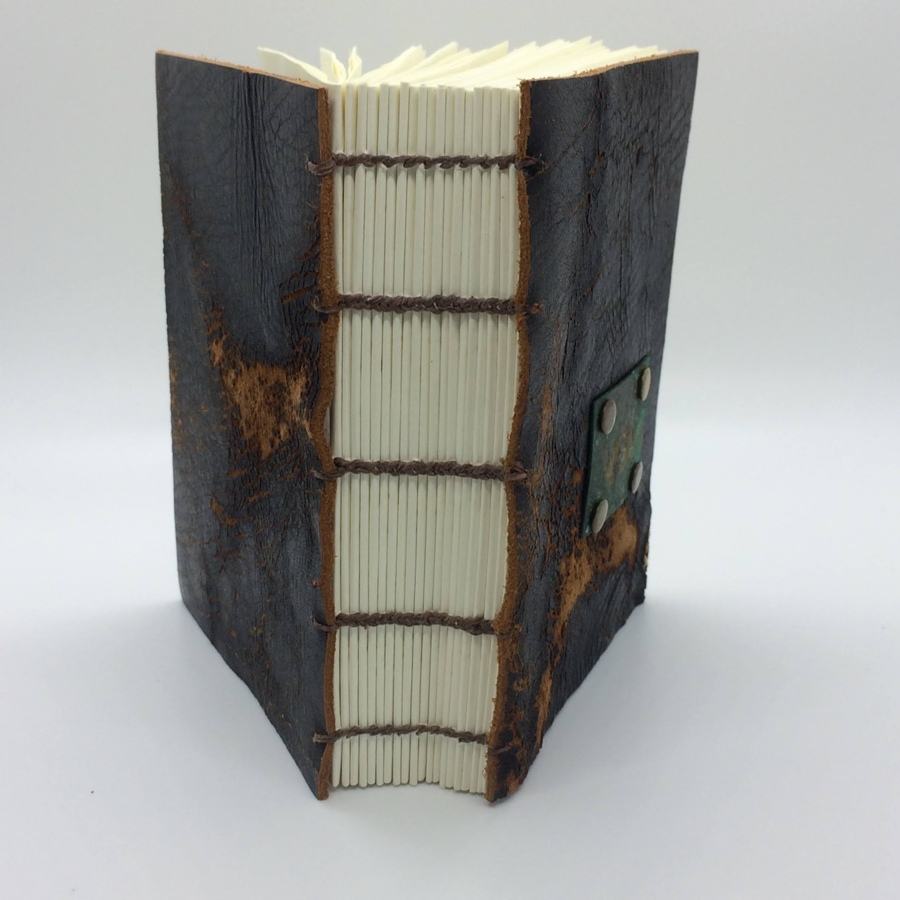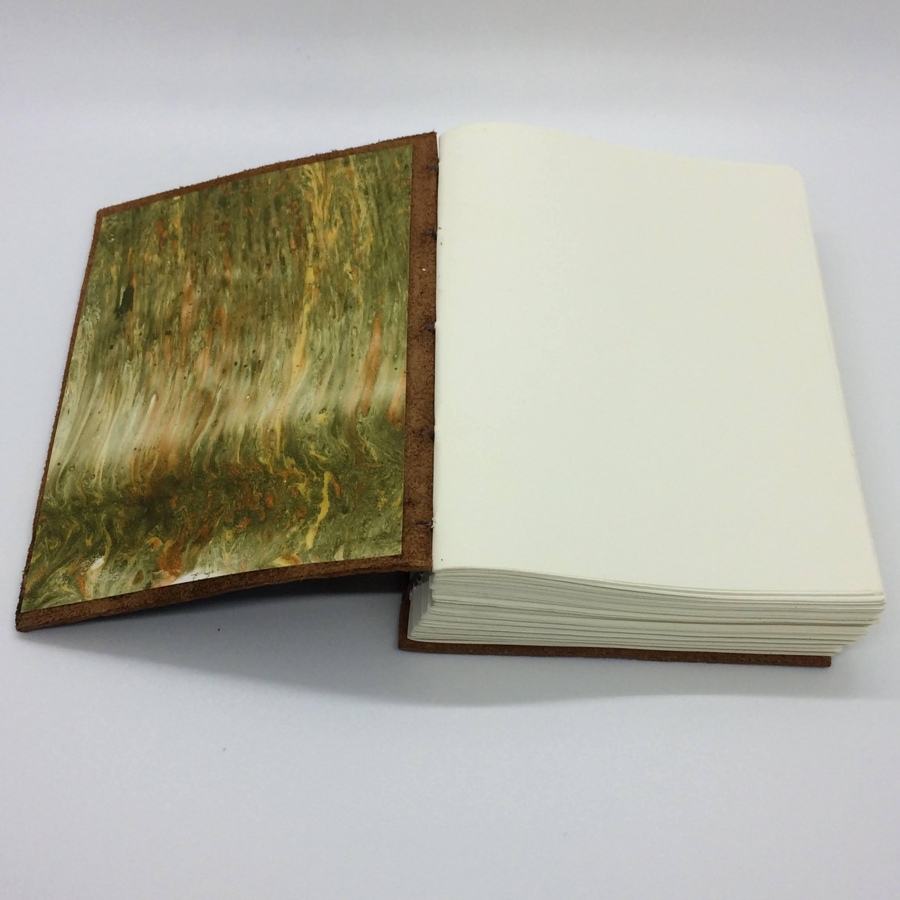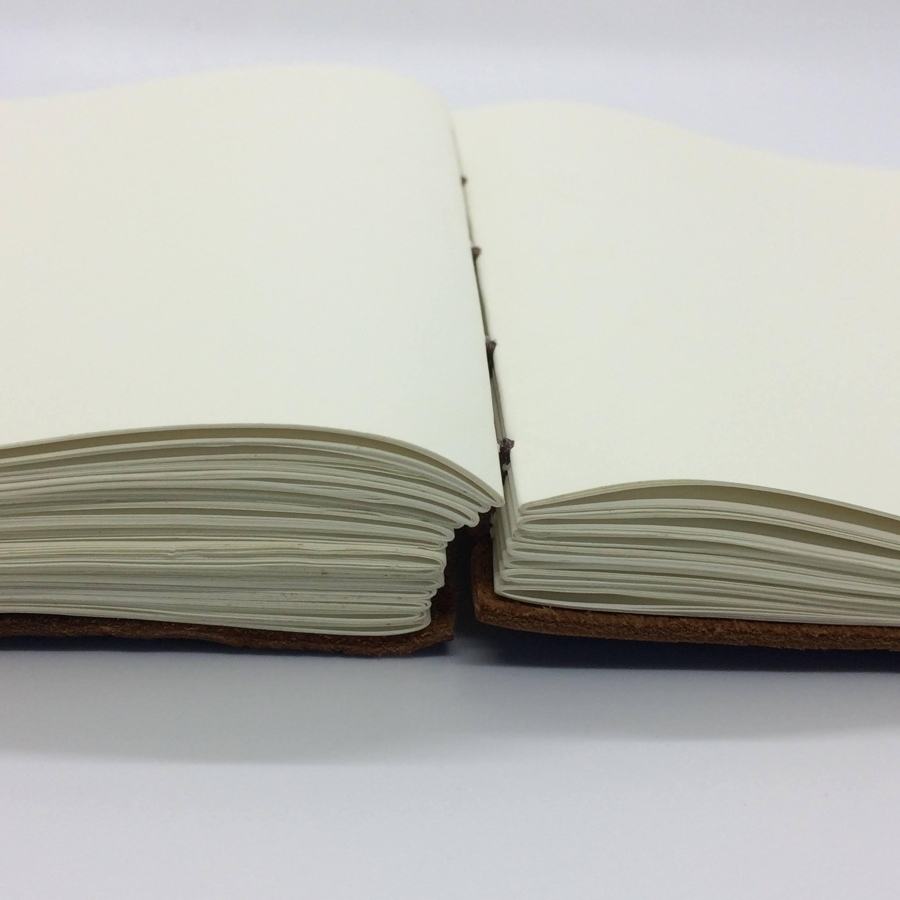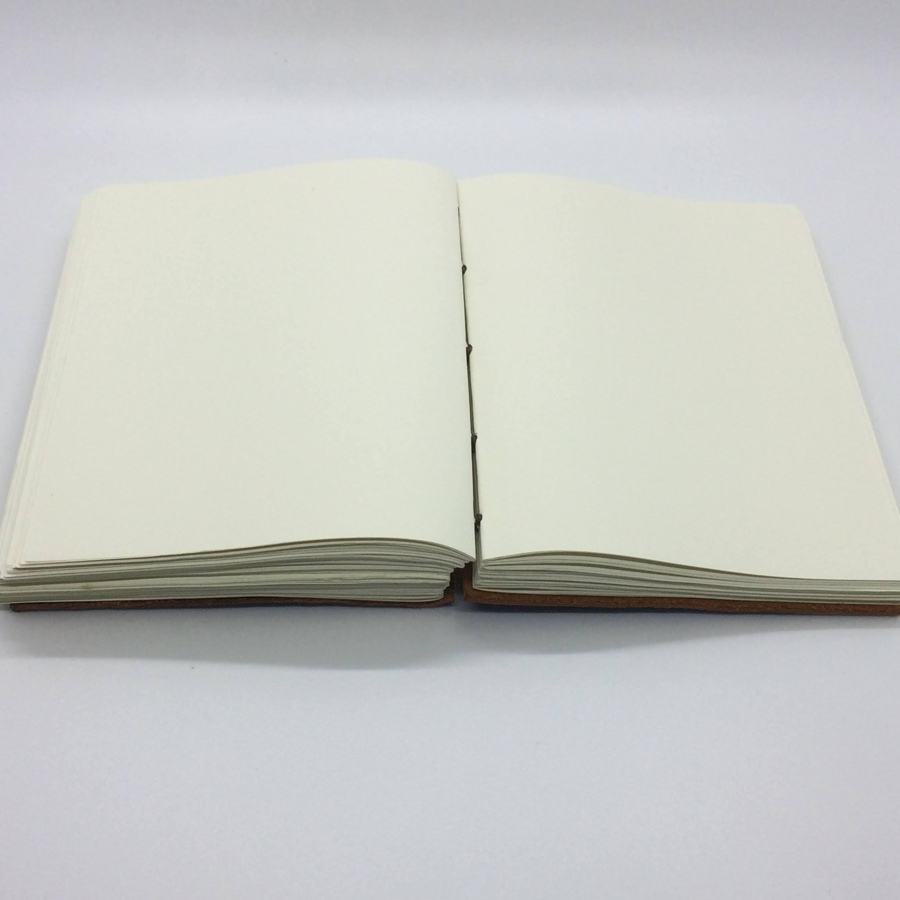My Dad recently sent me a couple of old toiletry bags to repurpose. This particular bag was crumbling in parts and had holes and disintegrating stitching. Even so, it had tons of material for me to use. I will use this reclaimed leather for the covers of this commonplace book.
I removed all the stitching and hardware. There’s enough leather here for 3 small books. This first book will be bound with the Coptic stitch binding method. My favorite part of this binding is the open spine look.
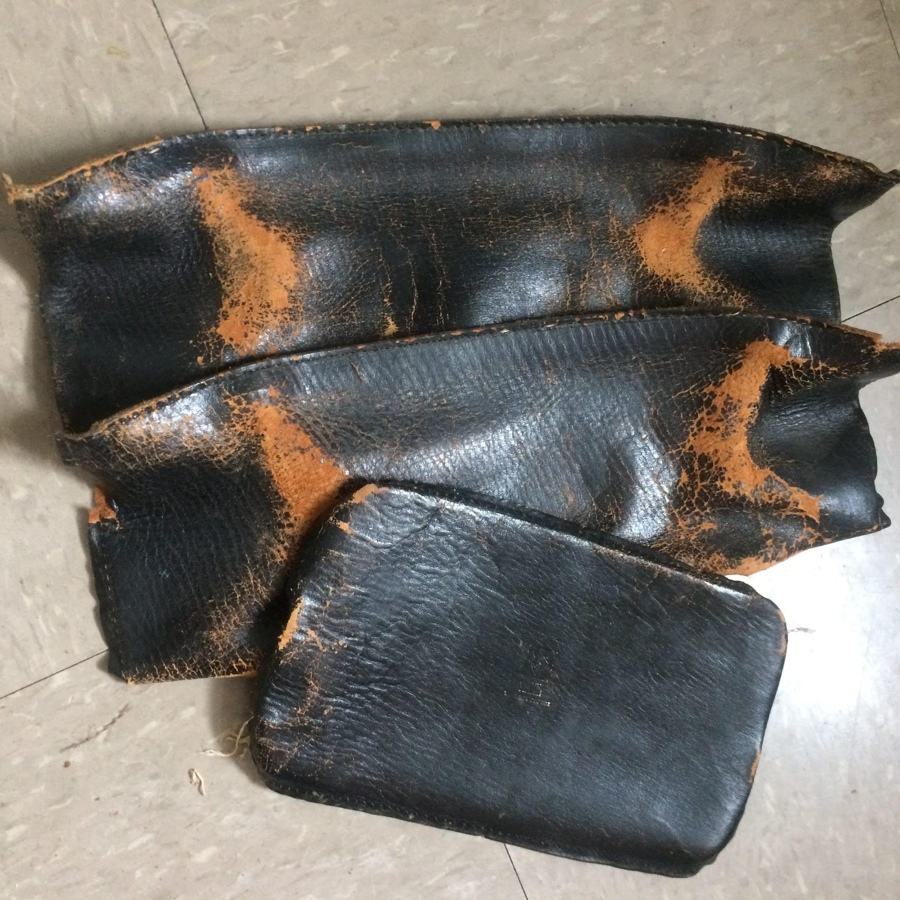
The leather had this shape for who knows how long. To reshape, I soaked each piece in hot water and let it air dry overnight.
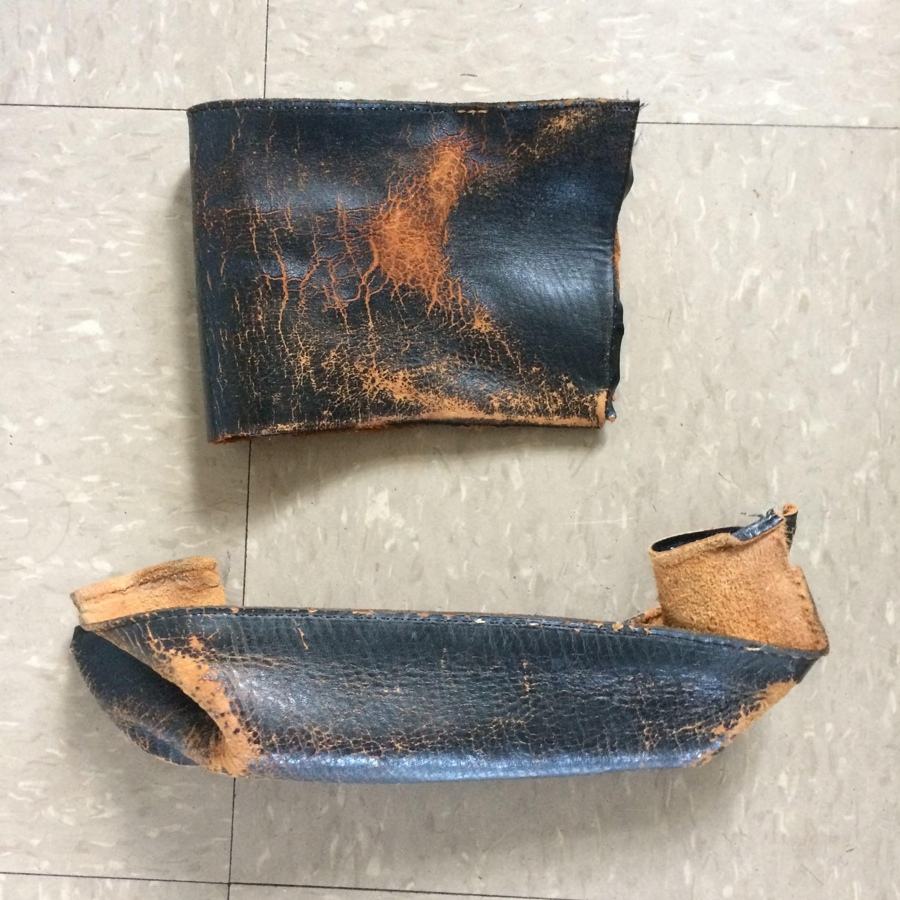
All dry. The leather required a bit of ironing/steam to really get it flat. I pressed it between two pieces of fabric on high heat with steam.
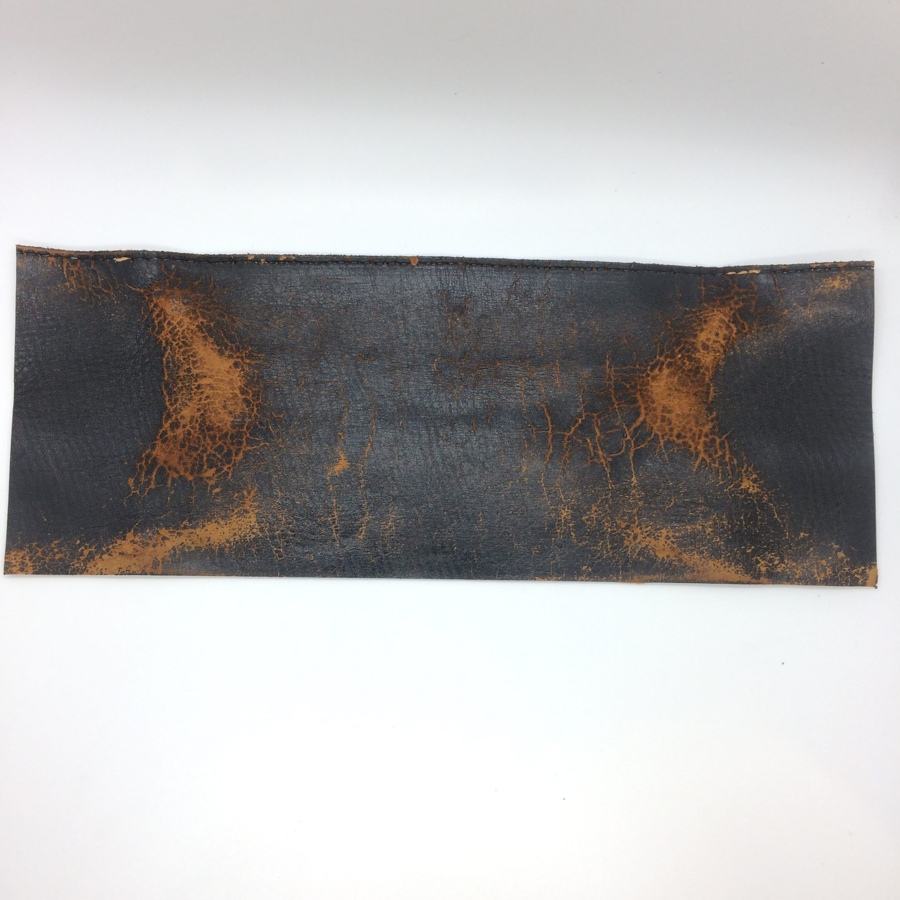
Cut to the size I want for the covers. I really like the rough textures. I left a small bit of stitching in as well.
Handmade marbled paper. I made this paper over 20 years ago with my Dad. The sheets are cut to just smaller than the covers.
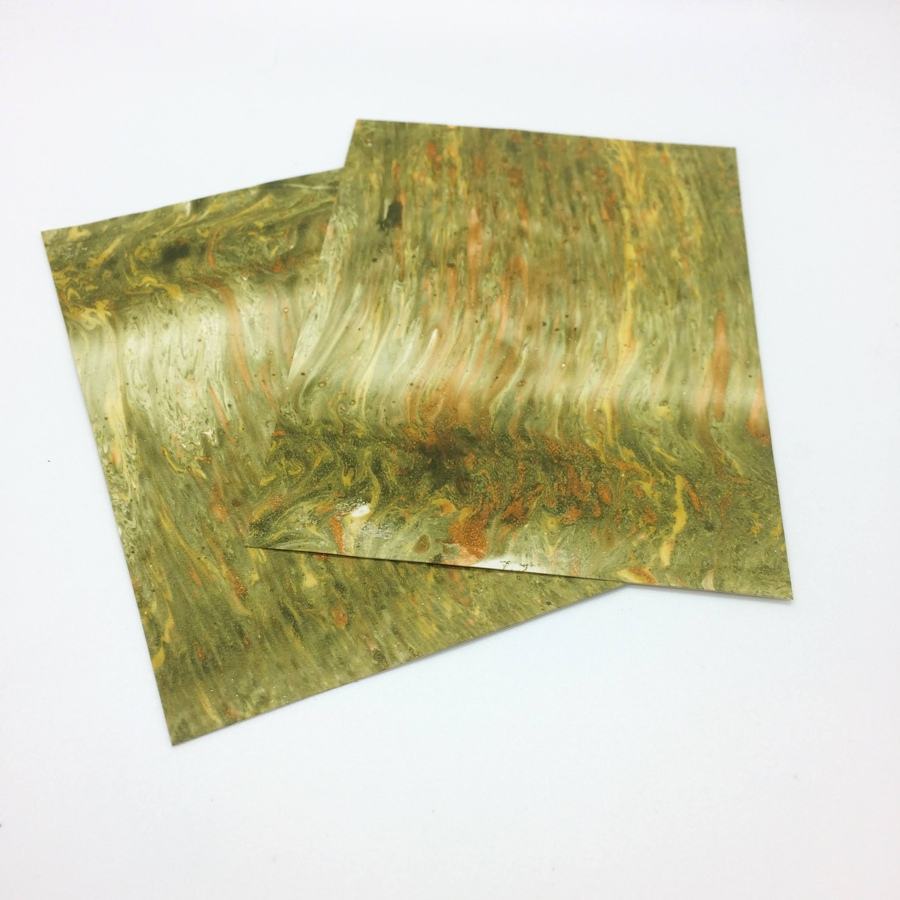
Cover components. The copper rectangle is a bit of scrap I found on the street about 10 years ago. I figured I might use it in a book one day and well, now I am. The brass fasteners are vintage.
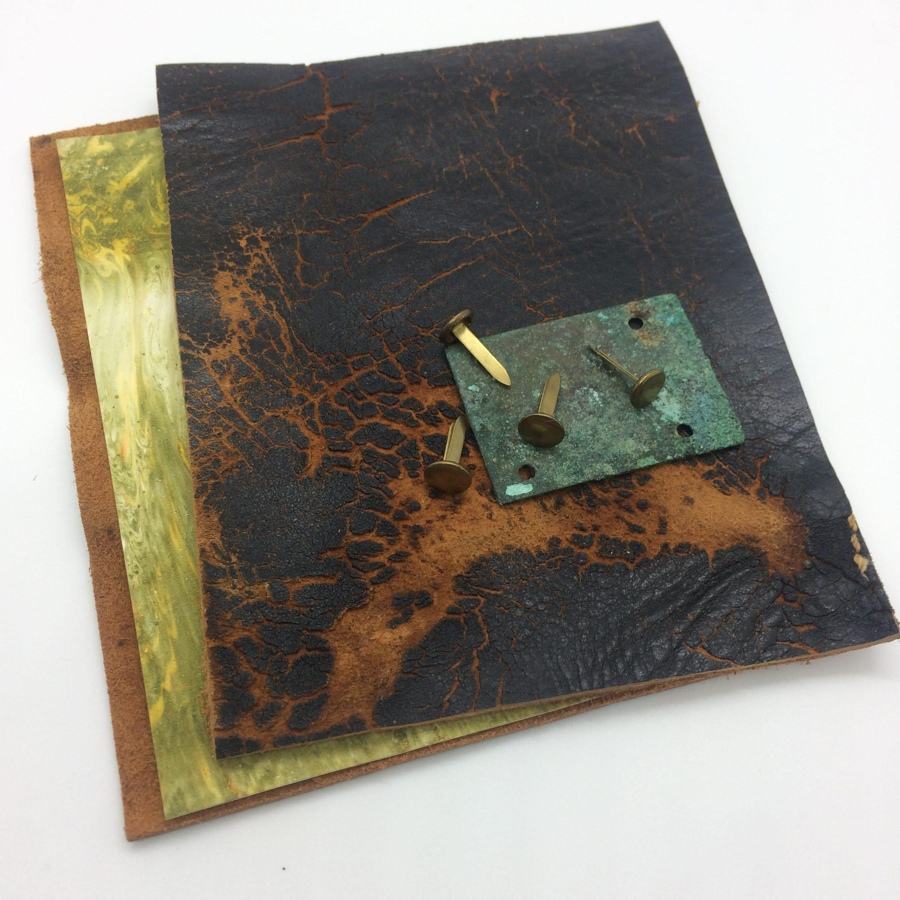
Letter die stamps for the plaque. My initials. JSL
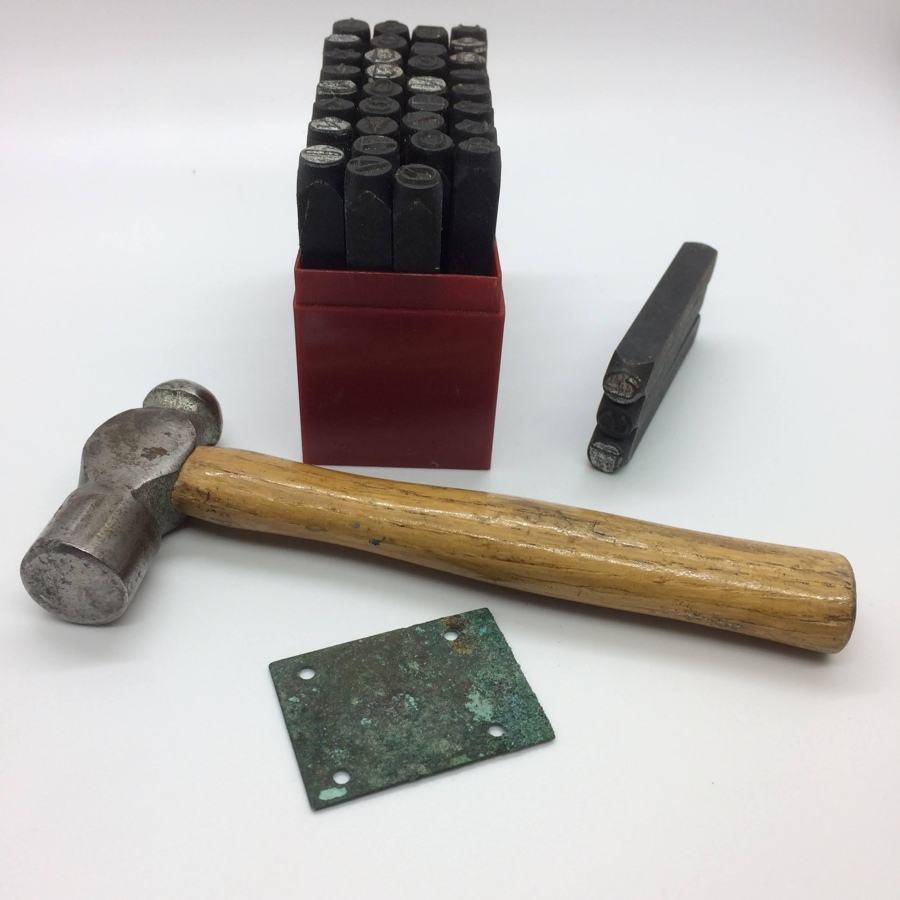
Oops. Hammering flaked the patina and the lettering was barely visible. I used an awl to scratch out the letters for legibility.
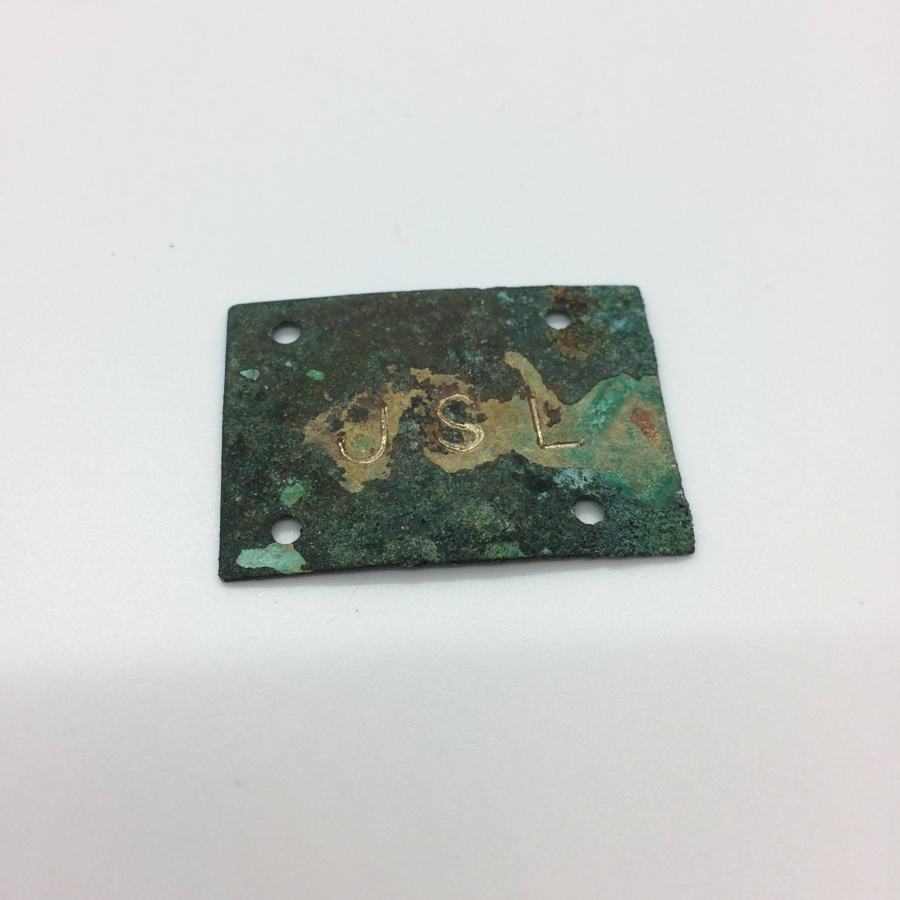
Plaque placed. I used an x-acto knife to cut small slits in the leather so the brass fasteners could pass through. I’ll be covering the reverse side with the marbled paper.
Using Yes! paste to glue the paper to the leather. I’ll press under weight so everything dries flat.
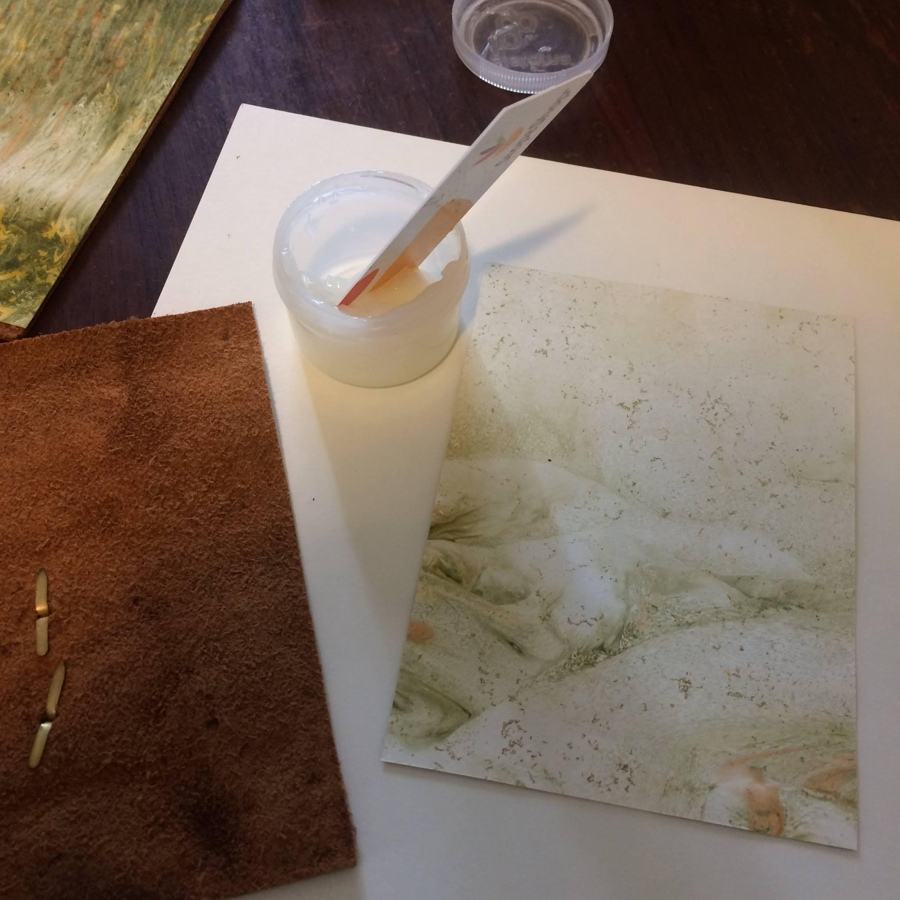
While I waited for the covers to set I got started on the text block. 52 gsm Tomoe River paper will be used for the text block of this book. I have been wanting to try this paper since I heard it is great for fountain pens. I’m using Tomoe River A3 in cream which is roughly tabloid size. 50 sheets in a pack. I’ll cut this into quarters which will give me 200 sheets to make my signatures. This will make an 800 page book. THICC. My text block is 8 1/4″ by 5 1/2″ so I’m able to get 4 out of each sheet. 50 sheets equaling 200 smaller sheets with a bit of excess seen here. I’ll use the excess for ink testing. Waste not, want not.
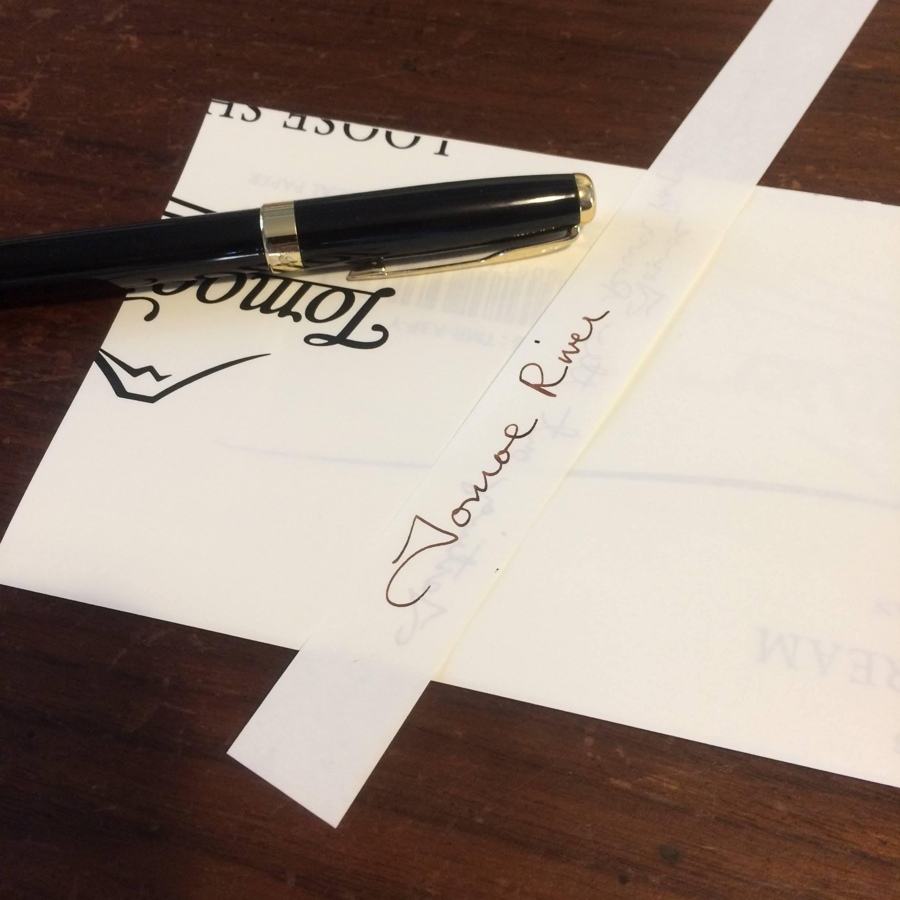
Text block is cut and ready for folding in half. I’ve wrapped it for now to prevent any damage. Tomoe River paper is super thin and can wrinkle easily. I expect to have wrinkles on the finished product. Character… Anyway, next step is to fold and create my signatures. I’m considering 10 sheets folded in half per signature. This will make 40 page signatures. There will be 20 signatures in all. This will make the book a total of 800 4 1/8″ by 5 1/2″ pages if you count just one side as a page.
Folded the scraps to make a mini mockup of half of the signatures. Once the actual book is sewn the thickness should decrease a bit. Finished book should be over an inch thick.
Text block is done! Whew.
Tomoe River paper is NOT forgiving to mistakes. I found it difficult to fold ten sheets at time. Every so often the paper caught on itself and creased in places I didn’t want it to. Ah well… this book will be taking a beating once I start using it anyway. Next step, hole punching.
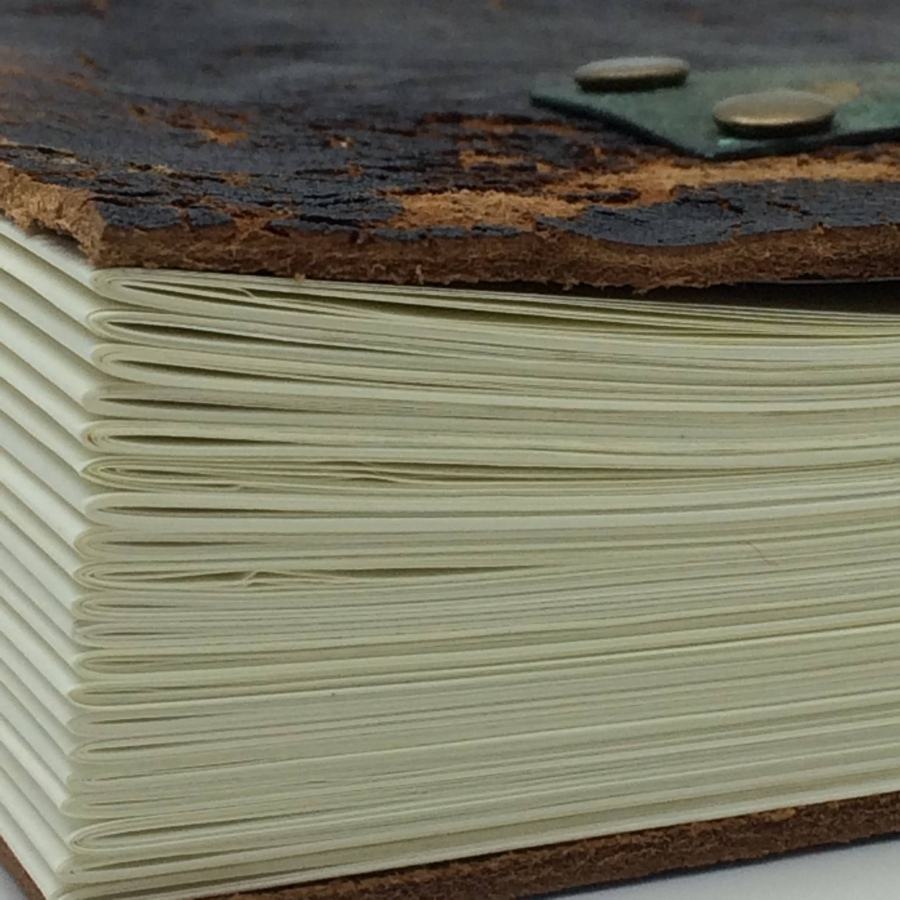
Signature hole template. This is made with card stock cut and folded to the same measurements as a single leaf for the book. Along the fold I have marked and punched holes where I want to sew. This template is then placed in the center of each signature and using the holes as a guide I punch through the signatures with an awl.
Inside the template. Originally was going to do more holes but opted for just 5.
Done! Since I don’t have a punching jig the holes aren’t perfect. This should be ok once I start sewing. The thread will hide the imperfections.
Waxed linen thread. I usually use embroidery thread that I wax with beeswax. For this book I opted for the expensive stuff. The general rule of thumb for the amount of thread is: height of book x number of signatures + covers. Easy way to do it is wrap the thread around the book as shown above. 22 times for the signatures and cover plus I like to add 2 just in case.
I won’t go into detail on how to do the Coptic Stitch binding but you can use Sea Lemon’s awesome tutorial here.
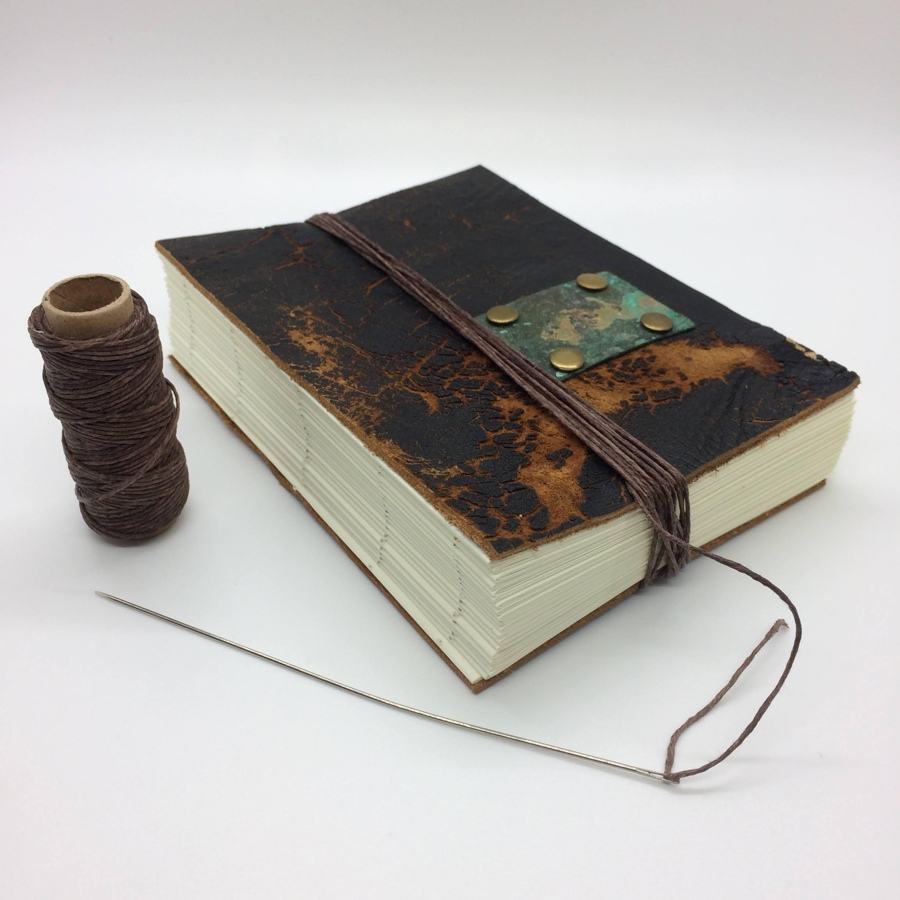
Just about halfway done. Whew. Tomoe River paper is actually difficult to sew since it is so thin. I was really afraid I’d tear the paper so I took my time doing this.
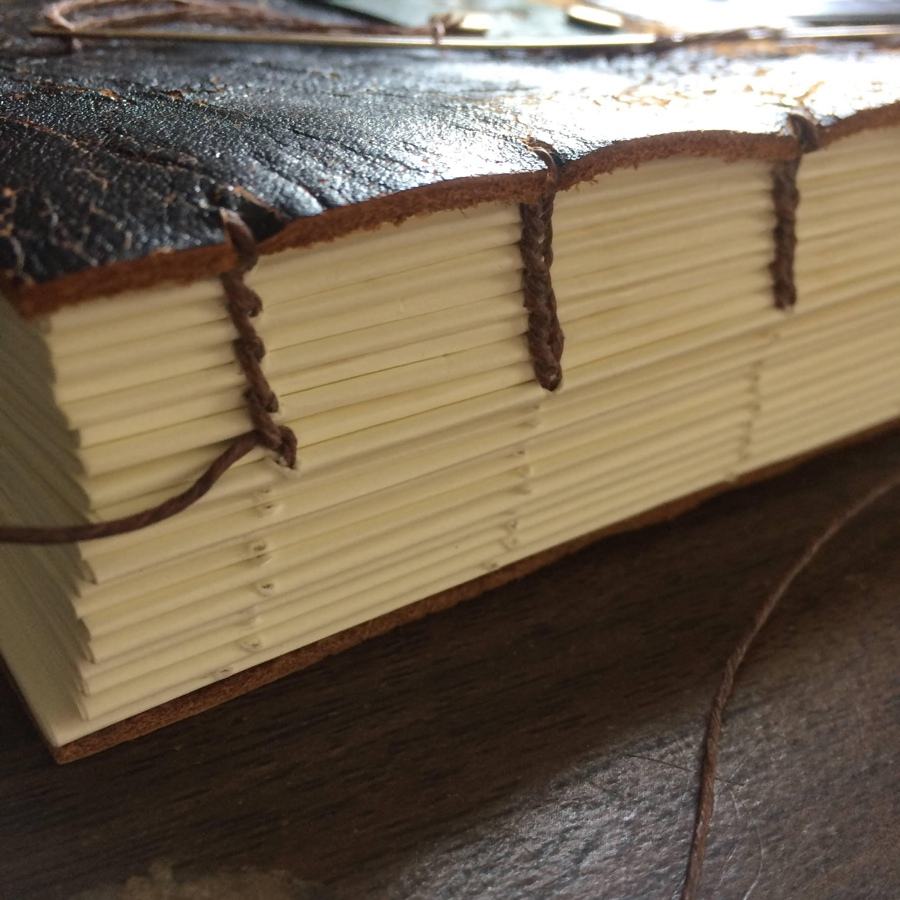
All done. It took me about 3 hours to sew with lots of breaks.
Open. You can see the marbled paper here. The rear cover is the same. My second favorite thing about this style of binding is that it opens flat no matter where you open the book.
And there you have it. I can hardly wait to start using this book. I hope this post inspires the reader to try making their own commonplace book or journal.
Edit: I’ve recently started using this book. Below is the inside front cover.
